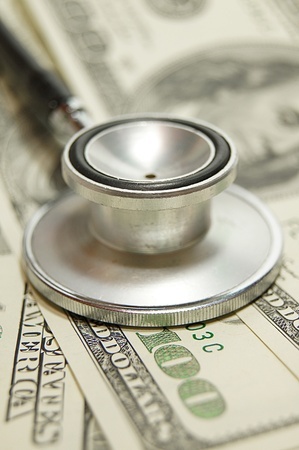In recent years, the health care marketplace has seen many diverse changes in the nature of payments. One leading change is the increase in patient deductibles, which have grown dramatically during the last decade. With a larger portion of costs now on the insured patients, medical providers and hospitals have needed to adjust to these new realities of the market.
According to an article published by Healthcare Financial Management Association earlier this year, while overall costs and premium rate increases have slowed in recent years, the average out-of-pocket deductible level has increased. From 2003 to 2013, health plans deductibles increased an average of 146 percent, leaving consumers burdening a greater share of health expenses themselves. For example, prior to 2004, no state in the U.S. averaged a deductible of $1,000 or more, but by 2013 all but three states averaged a deductible of more than $1,000.
 This growth in consumer costs has also meant a decreased utilization of services, which has kept increases for medical procedures and doctor’s visits to slow. As the average American household’s out-of-pocket expenditures increased to 9.6 percent in 2013 – nearly doubling from 5.3 percent just a decade earlier, according to the article – many opted to forgo visits whenever possible, especially as wages continued a slow growth in the wake of the Great Recession.
This growth in consumer costs has also meant a decreased utilization of services, which has kept increases for medical procedures and doctor’s visits to slow. As the average American household’s out-of-pocket expenditures increased to 9.6 percent in 2013 – nearly doubling from 5.3 percent just a decade earlier, according to the article – many opted to forgo visits whenever possible, especially as wages continued a slow growth in the wake of the Great Recession.
However, people still turn to medical providers when they need them most, which can oftentimes lead to incurring debts that they are directly liable for. Combining the increased deductible thresholds and an out-of-pocket maximum of $6,600 – which can include copays and coinsurance even after a deductible is met – for individuals under the Affordable Care Act, hospitals are faced with a growing volume of direct consumer debt collection. As J.P. Morgan noted in a 2013 white paper, hospital “bad debt” from consumers is growing exponentially.
According the white paper, outstanding debt on uninsured patients’ accounts, or those customers who pay for services directly, is growing at an average rate of 19 percent or more per year. At the same time, those who are insured are still shouldering a greater debt as well, with outstanding bad debt from those insured patients increasing at more than 30 percent annually. As of 2010, that total marked more than $65 billion, an amount that has only grown in the half-decade since.
On top of these outstanding accounts, the next major problem now facing providers – both large and small – is the need to address consumers more directly and clearly with their accounts receivable and billing efforts. While the process of working with insurance companies has become a largely automated process in a majority of offices, the procedures for handling client bills has lagged behind the times in most organizations. Most hospitals and providers still rely on sending their customers paper bills and handle payments largely through mailed-in checks or other options, with little adaptability to accept payments electronically or through online channels.
A major stopping point is that many insurers and medical practitioners have yet to make their transition to the digital world, notes Bloomberg. Citing information from a recent PricewaterhouseCoopers Health Research Institute report, a meager 15 percent of insurance companies’ payments are made electronically, with the largest hurdle being the number of doctors and hospitals that have not established a way to accept paperless payments – all this despite the ACA requirement that health plans be able to pay doctors electronically by January 2014, a deadline that passed 18 months ago.
 This sluggish growth into the digital world affects patients directly as well. With often complex and confusing paper statements, an increasingly frustrating contact process, and non-intuitive payment procedures, many who have consumed medical services find themselves in a difficult situation to make their payments – provided they are able to. Providers that have worked to modernize their payment structures, though, have seen success, with hospital systems like UMass Memorial Health Care in Massachusetts experimenting with quick pay discounts and other incentives to encourage indebted patients to settle their accounts quickly and digitally, according to the Bloomberg article.
This sluggish growth into the digital world affects patients directly as well. With often complex and confusing paper statements, an increasingly frustrating contact process, and non-intuitive payment procedures, many who have consumed medical services find themselves in a difficult situation to make their payments – provided they are able to. Providers that have worked to modernize their payment structures, though, have seen success, with hospital systems like UMass Memorial Health Care in Massachusetts experimenting with quick pay discounts and other incentives to encourage indebted patients to settle their accounts quickly and digitally, according to the Bloomberg article.
However, the main problem is that many medical entities are stuck in a vicious cycle. Hospitals and providers are sending more bills to patients directly; those patients are frustrated with the paper billing and/or are unable to pay; the bad debt load of the provider increases, and they are left unable to update their payment structures to a digital network; and hospitals and providers continue to bill patients by mail. If organizations were able to better manage their accounts and accept payments more seamlessly, the costs of managing paper billing forms and processing traditional payments could be reduced, which could make them more capable of working with consumers directly to keep their billing practices, policies and rates more manageable for the consumer, who is increasingly the primary debtor on providers’ books.
This is how C&E Acquisition Group can help. With our REVENUE 120 and REVENUE 365 programs, your organization can get a financial boost that can help you to make the operational changes and technology investments that you need and get you back on the path to a more secure, adaptable and stable financial future. We are fully compliant with all HIPAA and FDCPA requirements, and will handle your outstanding accounts professionally, respecting and maintaining the privacy and security of your patients’ information. Contact us today to find out more and see how we can make your patient responsibility our responsibility.




